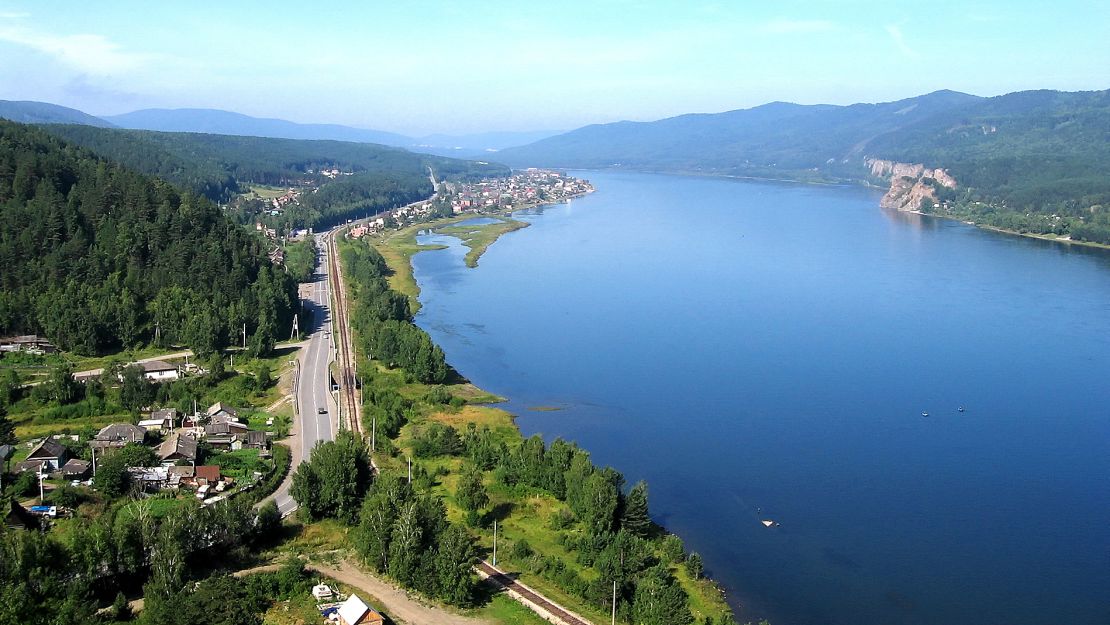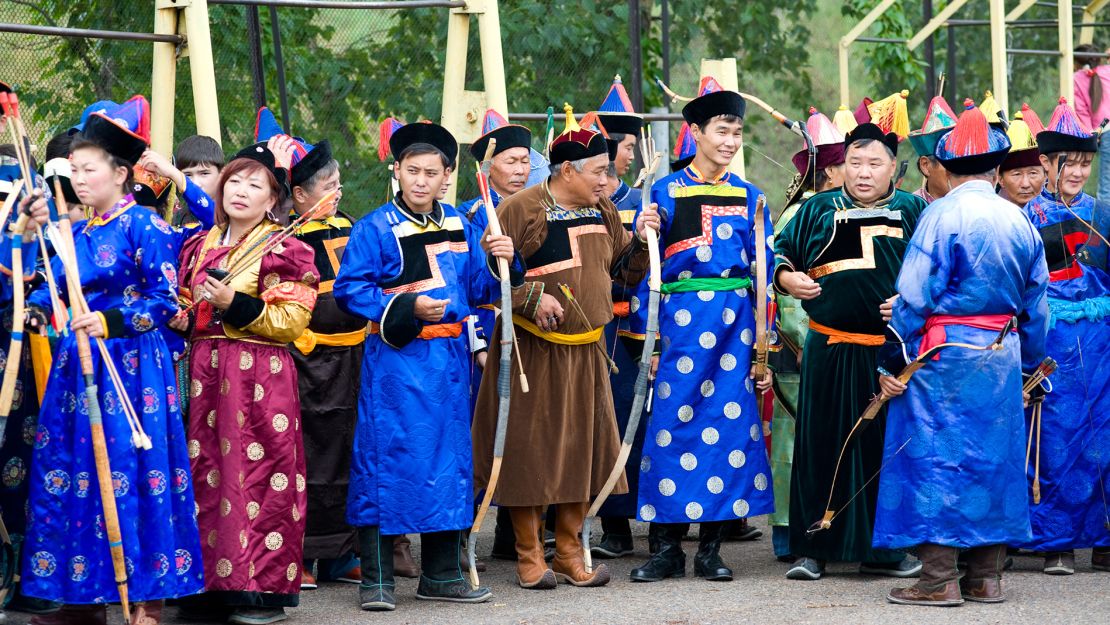Story highlights
Trans-Siberian railway spans eight time zones, covers more than 5,000 miles
Lesser-known detours include Trans-Manchurian route through China's Rust Belt region
A century ago, a turbulent Russia was only months away from the simmering discontent among the impoverished peasant population that erupted into the Bolshevik Revolution.
The doomed final Tsar, Nicholas II, soon to be executed along with his entire family, had just completed perhaps his grandest legacy: a continuous railway line connecting Moscow to Vladivostok on the far eastern coast of Siberia.
One hundred years on, the railway line, spanning eight time zones and covering more than 5,000 miles of track, continues to beguile as a vital artery linking together the largest nation on earth.
But beyond the classic sites of Lake Baikal, the Kremlin and Vladivostok, there’s a wealth of lesser-known corners and detours on this epic journey.
The other Trans-Siberian 1: Trans-Manchurian line

The Trans-Siberian is actually just an umbrella term for a variety of routes that commence in Moscow.
As well as the “classic” Moscow to Vladivostok route there’s also the Trans-Mongolian line, which dips south after Lake Baikal, crossing through Mongolia into the Gobi Desert and through the Chinese border, eventually stopping in Beijing.
Infinitely more obscure however are two branch lines that, although easy to book tickets for, are seldom used by non-Russians.
The Trans-Manchurian route goes through the Chinese Rust Belt region from the Russian border at Manzhouli to Beijing, passing through Harbin, a fascinating city where, incredibly for auto-obsessed China, the main drag is pedestrianized.
The wealth of 19th century churches and synagogues is a melange of Chinese and Russian influences bedded together in relative harmony.
Mustang: A Himalayan kingdom forgotten by time
The other Trans-Siberian 2: The BAM Line
This is the ultimate combination of obscurity and pointlessness in train form. Only completed in the early 1990s, the Baikal-Amur Line took three attempts and half a century to complete.
Only a handful of trains now make a tortoise-paced journey on what was intended to be an alternative route from Lake Baikal to the Pacific coast.
Running for 2,300 miles the journey heads through pristine taiga forest, marshes and almost-deserted villages consisting of little more than a dozen or so clapboard houses.
Conventional sights are virtually nil for visitors but that’s not really the point.
This is a chance to see genuinely unknown Siberia where, alighting in the BAM administration capital Tynda or the wide Soviet boulevards of Komsomolsk-na-Amure, “tourism” is still a relatively unknown concept.
Sacred sea: Russia’s vast and remote Lake Baikal
Krasnoyarsk
Closed to outsiders until nearly a decade after the fall of the USSR due to its nuclear reactors, Krasnoyarsk is missed by many Trans-Sib travelers who stay on the train until Lake Baikal.
The center, however, is a beguiling combination of Soviet tidiness and Tsarist era timber wooden mansions all set amid a backdrop of jagged low hills.
The gargantuan hulk of the SV Nikolai is docked in the naval waters of the Yenisei River on which a young Lenin traveled on when forced into Siberian exile by the Tsar.
Tour guide Nadya Arlashina is just one local who thinks the city deserves a higher profile.
“So few people know about the strange volcanic rock formations that we call ‘stolby,’” she remarks.
“They look like giant fingers and are all over a huge park outside the city. The best way to see them is to go by a ski-lift, which runs all year round in the park.”
9 of Asia’s most underrated attractions
Ulan Ude

The mercantile hustle of modern Russia isn’t yet so apparent when you get this far east in Siberia.
Standing inert and looking patricianly in the center of Ulan Ude’s vast city square is an immense bust of Lenin – the biggest on earth at more than seven and a half meters in height.
The capital of the Buryat region, the Buddhist temples and narrow side streets are a strong taster of what’s to come further south in Mongolia.
The city’s grandiose Opera and Ballet Theater is a colossal circular pile decorated with swirling bas-reliefs and frescoes. Built in the Stalin era there are, unusually, still a few small symbols of Uncle Joe’s face lurking amid the masonry.
As the taiga gives way to dragon toothed, treeless peaks in these parts, the panoramic view over the city from the heights of the modern Rinpoche Bagsha Datsan temple is given a melodic edge by the bell ringing and chanting from the Tibetan monks worshiping here.
Look carefully and you may well find them charging their mobile phones underneath their oblong prayer books.
Spotlight Russia: 7 golden travel tips
Yekaterinburg
The city where Russia’s first elected president, Boris Yeltsin, arrived on the political scene, serving as mayor in the late 1970s, Yekaterinburg has great infamy as the location for the execution of the last Tsar and his family in a basement in 1917.
There’s now a handsome Orthodox church on the spot of the murders.
But, according to local tour guide Marina Monsentseva, this city has long been unfairly ignored by Trans-Siberian travelers:
“This is actually one of the wealthiest cities in Russia today.
“It still looks quite Soviet but the city has a reputation for working hard and playing hard.
“I love the new ‘Loft’ performance and art space, which is in the huge building that used to house the local newspaper.
“The city has its own Banksy-type figure called Old Man Bukashkin. He died in 2005 but you can see the works he painted on garages and walls on a Bukashkin trail in the city.”
Otherworldly travel destinations here on Earth
The luxury option

If the idea of getting morning coffee from a samovar in a corridor or bartering for smoked fish on railway station platform’s doesn’t appeal, then there’s a solitary luxury train that follows the route from Moscow through Siberia and Mongolia and all the way to Beijing.
The Tsar’s Gold is run by a German company and, through the summer months, takes about 180 visitors on the entire route on a 16-day trip.
The plus side is that the carriages (in five different classes) are decorated in Tsarist style drapes and blankets, the food is in the form of four-course dinners in chandelier-lit restaurant cars and the train stops daily so travelers can spend hours in each destination on route.
The minus point is that it doesn’t come cheap.
Sharing a cabin in the lowest class on the train costs a shade more than $4,000 per person.
For the double beds, en suite showers and in-cabin flat screen TVs of Bolshoi Platinum class, tickets go up to $15,000 per person.
11 of the world’s most luxurious train journeys
31 must-see places around the world
Rob Crossan is a freelance journalist and radio presenter based in Stockwell, South London.













